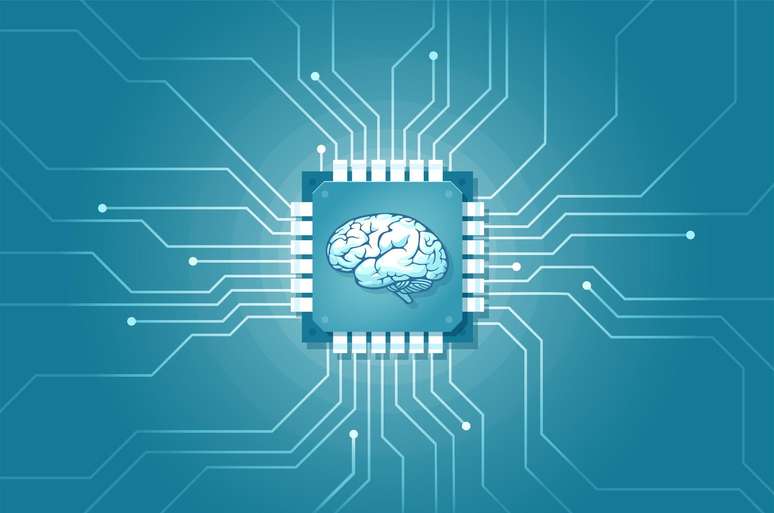Could it be that when we unite mind and machine, the traditional boundaries of our identity can dissipate?
In March, a man named Noland Arbaugh demonstrated that he could play chess using only his mind.
After living with paralysis for eight years, he regained the ability to carry out tasks that were previously inaccessible to him, thanks to a brain implant designed by the company Neuralink, founded by Elon Musk.
“It became intuitive for me to imagine the movement of the cursor,” Arbaugh said in a video broadcast. “I just look at a dot on the screen and it moves where I want it to go.”
Arbaugh’s description indicates a sense of self-agency. He suggests that he was responsible for moving the chess piece. But who actually carried out the actions, him or the plant?
As a philosopher of mind and an expert in the ethics of artificial intelligence, I was fascinated by this question.
Brain-computer interface (BCI) technologies, such as those proposed by Neuralink, symbolize a new era in the interconnection between the human brain and machines. They invite us to reconsider our intuitions about identity, the self, and personal responsibility.
In the short term, the technology promises many benefits for people like Arbaugh, but the applications could extend even further. The company’s long-term goal is to make these facilities available to the general population, who will be able to increase and strengthen their capabilities.
If a machine can perform actions that were previously reserved for the brain matter inside our skull, should it be considered an extension of the human mind or something separate?
The extended mind
For decades, philosophers have debated the boundaries of personality: where does our mind end and the external world begin?
At a primal level, you can consider that our mind rests in the brain and body. But some philosophers have proposed that this definition is a little more complicated.
In 1998, philosophers David Chalmers and Andy Clark presented the “extended mind” hypothesis. They suggested that technology could become part of us.
In philosophical parlance, the two scholars proposed active externalism – a way in which humans can delegate some aspects of their mental processes to external artifacts, which would be integrated into the human mind itself.
This proposal emerged before the advent of smartphones and served to predict how we now assign cognitive tasks to our devices, from finding routes to get somewhere in our memory.
As an intellectual exercise, Chalmers and Clark also imagined a “science fiction” scenario in which someone with a brain implant manipulates objects on a screen — in fact, something very similar to what Arbaugh recently did.
To play chess, Arbaugh imagines what he wants, such as moving a pawn or a bishop. And the implant, in this case the Neuralink N1, selects the neural models of your intention, before decoding, processing and executing the actions.

Now that this is something that has already happened, what conclusion should we draw from this scenario, philosophically speaking? Is Arbaugh’s implant part of his mind, intertwined with his intentions?
If the answer is “no,” controversial questions arise to define who the true perpetrator of one’s actions is.
To understand why, let’s consider a conceptual distinction: events and actions.
Events bring together all our mental processes, such as our thoughts, beliefs, desires, imaginations, contemplations, and intentions. Actions are events that you work on, such as finger movements to scroll this report on the screen, at this very moment.
Normally there is no separation between the event and the action.
Let’s take as an example a hypothetical woman, Nora, who plays chess. She does not have a built-in BCI.
By regulating events, Nora can form the intention to move one of her pieces forward one square and does so simply by moving her hand.
In Nora’s case, intention and action are inseparable. The action of moving the pawn can be assigned.
But Arbaugh needs to imagine his intention and the implant carries out the action in the outside world. In this case the event and the action are separate.
With this arises important concerns. Can a person who uses a brain implant to enhance their abilities maintain executive control of their actions integrated into the BCI?
The human brain and body already produce many involuntary actions, such as sneezing, coordination errors, and pupil dilation, but could the actions controlled by the implants appear to come from an external source?
Could the implant seem like a parasitic intruder that will corrode the purity of a person’s will?
I call this problem the contemplation dilemma.
In Arbaugh’s case, he eliminates crucial steps in the causal chain, such as the movement of his hand that makes his move in chess.
What if Arbaugh first thinks about moving his pawn one square forward, but in a split second changes his mind and realizes that he should move it two squares instead of one? Or what if he is analyzing possibilities in his imagination and the implant misinterprets one as his intention?
The stakes are low on the chessboard. But if these implants become more common, the question of personal liability will become more vexing.
What happens, for example, if an action controlled by an implant causes injury to another person’s body?
And this is not the only ethical question raised by these technologies. Its superficial commercialization without fully solving the riddle of contemplation and other important issues could pave the way for a dystopia worthy of science fiction stories.
William Gibson’s novel Neuromancer, for example, highlights how implants could lead to loss of identity, manipulation, and loss of privacy of thought.

The fundamental question of the contemplation puzzle is to define when an “event of imagination” transforms into “intentional imagination of action”.
When I apply my imagination to think about what words I should use in this sentence, it is an intentional process. And imagination directed into action – typing words – is also intentional.
In terms of neuroscience, it is almost impossible to distinguish between imagination and intention.
A study conducted in 2012 by a group of neuroscientists concluded that there are no neural events that qualify as “intentions to act”.
Without the ability to recognize the neural patterns that define this transition in someone like Arbaugh, we may not be sure which imagined scenario is the cause of each effect in the physical world.
This would allow partial responsibility and authorship of the act to be attributed to the plant. We will therefore ask ourselves once again whether the actions are really his and whether they are part of his personality.
But now that Chalmers and Clark’s experiment on thought and the extended mind has become a reality, I propose to reexamine their fundamental ideas as a method of eliminating the separation between events and actions in people with brain implants.
Adopting the extended mind hypothesis would allow someone like Arbaugh to take responsibility for his actions without sharing them with the plant. And this cognitive view suggests that to have an experience as one’s own, one must think of it as one’s own.
In other words, the person should consider the implant as part of their identity, within the confines of their inner life. This can give rise to a feeling of activity, ownership and responsibility.
Brain implants like Arbaugh’s have undoubtedly opened new doors to philosophical discussions about the boundaries between mind and machine.
Debates about action and activity have traditionally focused on the boundary of identity, between the skin and the skull. But with brain implants this boundary has become malleable, meaning the self can extend further into technology than ever before.
Or, as Chalmers and Clark observed: “When the hegemony of the skin and skull is usurped, we may be able to more truly observe ourselves as creatures of the world.”
* Dvija Mehta is a philosopher of mind and researcher on the ethics of artificial intelligence at the Leverhulme Center for the Future of Intelligence at the University of Cambridge, UK.
Read the original version of this report (in English) on the BBC Innovation website.
Source: Terra
Rose James is a Gossipify movie and series reviewer known for her in-depth analysis and unique perspective on the latest releases. With a background in film studies, she provides engaging and informative reviews, and keeps readers up to date with industry trends and emerging talents.


![Un Si Grand Soleil Preview: Episode Summary for Friday, October 31, 2025 [SPOILERS] Un Si Grand Soleil Preview: Episode Summary for Friday, October 31, 2025 [SPOILERS]](https://fr.web.img2.acsta.net/img/da/61/da61ba3f1d087a6451d7f7757d04c802.jpg)




